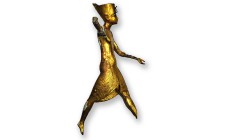Looting and Conflict in Cambodia: The Latchford Case
Mackenzie, S. and Davis, T. (2025) ‘Looting and conflict in Cambodia: The Latchford case’, in Saloul, I. and Baillie, B. (eds.) The Palgrave Encyclopedia of Cultural Heritage and Conflict. Cham: Palgrave Macmillan, pp. 1–9.
“Blood antiquities” are cultural objects looted from archaeological sites or stolen from collections such as museums in conflict zones either to finance hostilities or exploit them for personal gain. The term gained traction with the exposure of a thriving illicit trade by Daesh (also known as ISIL) in Iraq and Syria, which has now been extensively documented. However, perhaps the best-understood case study from source to market comes not from the Middle East, but a global hotspot a generation ago, Cambodia. From 1970 on, this Southeast Asian kingdom endured decades of civil war, triggering the wholesale pillage of its cultural patrimony. In the post-conflict years, on-the-ground research in the country combined with law enforcement and media investigations overseas (and particularly in the United States) have pieced together the main trafficking network responsible. Its ringleader is thought to have been expatriate Douglas Latchford, who is said to have linked the Khmer Rouge and organized criminals operating out of Cambodian warzones with the elites of the Western art world. In this entry, we will document what is known about Latchford, his enablers, and methods, as an example of criminal patterns at the intersection of cultural heritage and armed conflict.
Available on the publisher’s website: https://link.springer.com/referenceworkentry/10.1007/978-3-030-61493-5_132-1
